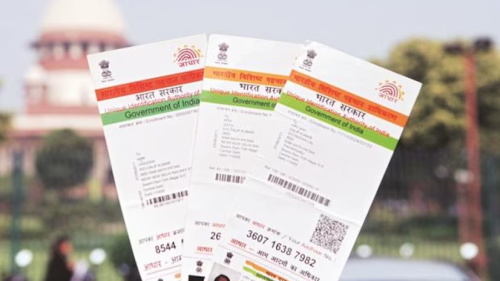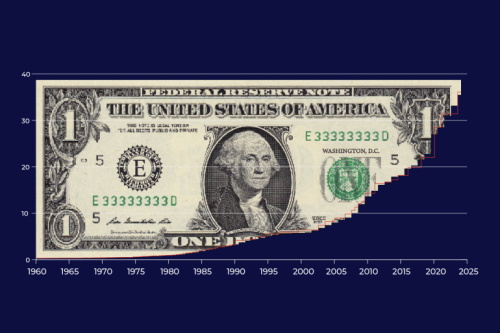Biometric Banking: India’s Aadhaar System Goes Global

When people think of India, what often comes to mind is its complex social fabric, massive population, and rapidly growing economy. But few realize that India is quietly emerging as a global pioneer in digital transformation.
From the “Unidentified” to Digital Citizens
Not long ago, nearly half of India’s population lacked formal identification. Without it, they couldn’t open bank accounts, apply for welfare, legally work, or even pay taxes. In response to the widespread lack of official identification, the Indian government introduced the Aadhaar system — a groundbreaking initiative aimed at bridging the gap between citizens and essential public services.
Aadhaar stands as the most extensive biometric ID program globally, providing each Indian resident with a distinct 12-digit identification number. This number is tied to biometric data such as fingerprints, iris patterns, and facial features. As of April 2025, over 1.4 billion people had registered with the system, making it nearly universal across India’s population.
What seems like a simple number has brought about a digital revolution. With just their Aadhaar number and a fingerprint or iris scan, individuals in India can open bank accounts, pay taxes, collect pensions, receive welfare benefits, and even activate a mobile SIM card. For millions in remote villages who have never accessed formal financial services, this is nothing short of a digital awakening.
The Smart Architecture Behind the System
Aadhaar’s success owes much to its sophisticated design. The 12-digit ID is randomly generated, with the final digit verified by the Verhoeff algorithm to prevent duplication and fraud. Crucially, the number contains no embedded personal data such as birthdate or address, enhancing privacy.
Even more transformative is Aadhaar’s open API infrastructure. Banks, telecom providers, and social security institutions can plug into the system for identity verification. This “plug-and-play” model dramatically lowers integration costs and has been instrumental in enabling the rise of India’s Unified Payments Interface (UPI).
Today, UPI processes over 10 billion transactions per month, with daily volumes exceeding ¥100 billion (approx. \$14 billion USD), making it one of the most active real-time payment platforms globally. Aadhaar’s identity layer is a critical pillar of this seamless financial ecosystem.
Transforming Welfare and Compliance
Aadhaar has also revolutionized India’s approach to social welfare. In the past, weak identity verification allowed corruption and fraud to flourish — with middlemen siphoning off government subsidies. Now, through Aadhaar-linked Direct Benefit Transfer (DBT), aid can be deposited straight into eligible recipients’ bank accounts, dramatically reducing leakage and inefficiency.
The system’s strengths were especially evident during the COVID-19 pandemic. Over 2 billion vaccine doses were recorded and tracked using Aadhaar, ensuring consistency and accountability in a nationwide health crisis.
On the corporate side, the 2017 Aadhaar Act mandates that employers collect Aadhaar details for tax filings and social insurance. Non-compliance can result in penalties of up to 10% of monthly wages. This not only improves regulatory oversight but gradually brings informal labor under formal protection.
Exporting the “India Stack” to the World
Perhaps the most surprising development is that Aadhaar is no longer just an Indian experiment.
Starting in 2021, India’s Unique Identification Authority (UIDAI) began collaborating with global organizations such as the World Bank and the United Nations to promote Aadhaar-inspired digital ID systems on the international stage. These collaborations aim to standardize biometric technologies, promote multimodal identification (fingerprints + facial recognition), and offer technical consultancy.
In the Philippines, Aadhaar-inspired technology has enabled over 76 million citizens to access digital identity services, now widely used in healthcare, social welfare, and finance. Morocco is piloting a similar system, already registering over 7 million users — a significant step toward digital governance.
India’s “digital identity solution” is becoming a model for other countries seeking cost-effective, inclusive, and scalable systems — one that contrasts with the privacy-heavy frameworks dominant in the West.
From the Margins to the Mainstream
Once a country struggling with identity exclusion, India has now become a leader in biometric-backed governance. Aadhaar is no longer just about identification — it’s the foundation for financial inclusion, healthcare delivery, welfare distribution, and broader public service innovation.
As more countries look to replicate or adapt the model, Aadhaar's global journey may be just beginning. It may not be a perfect solution — but for many developing nations seeking to modernize governance and expand access to essential services, India’s experience offers a compelling blueprint worth exploring.



